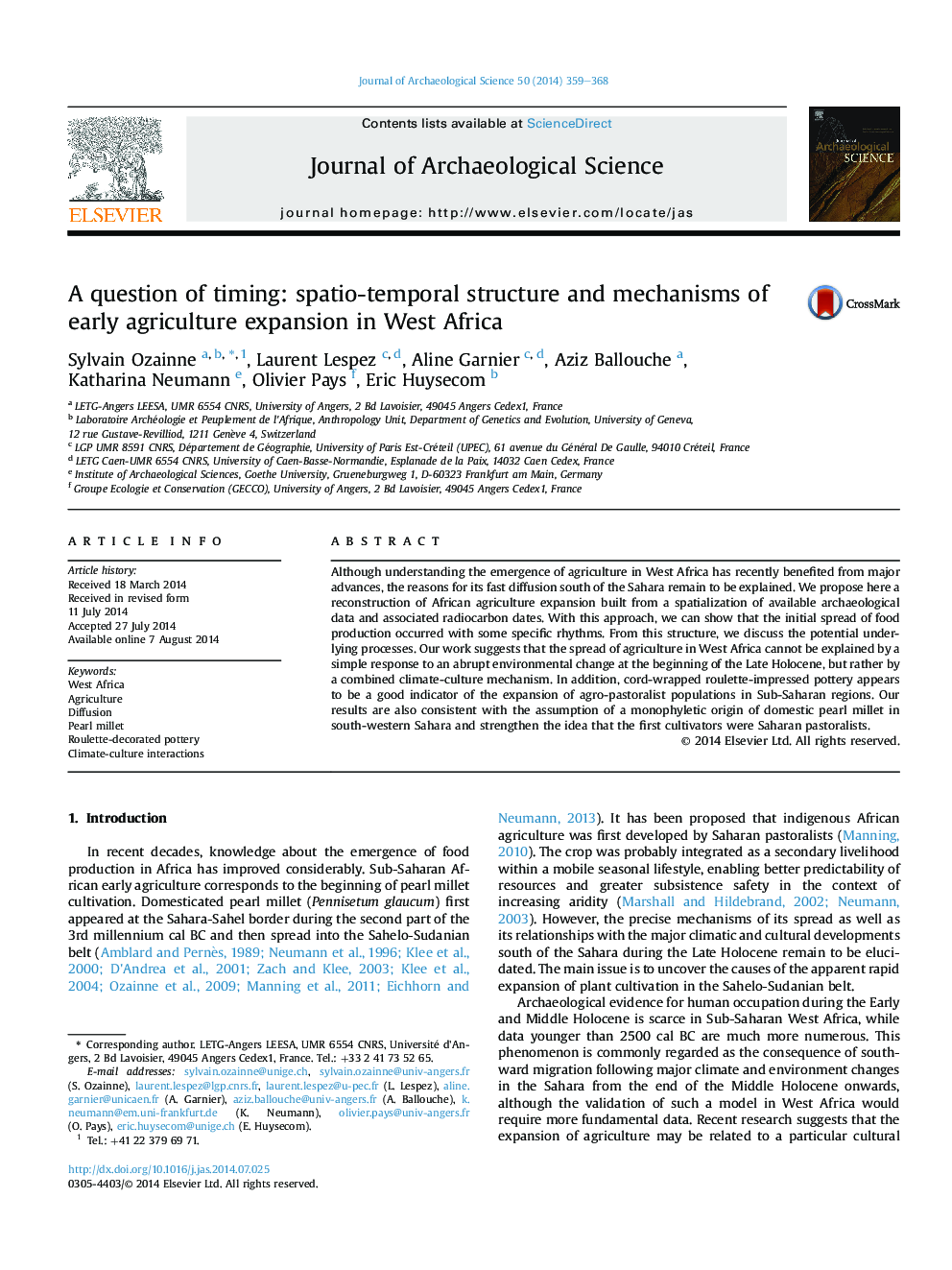| Article ID | Journal | Published Year | Pages | File Type |
|---|---|---|---|---|
| 7443000 | Journal of Archaeological Science | 2014 | 10 Pages |
Abstract
Although understanding the emergence of agriculture in West Africa has recently benefited from major advances, the reasons for its fast diffusion south of the Sahara remain to be explained. We propose here a reconstruction of African agriculture expansion built from a spatialization of available archaeological data and associated radiocarbon dates. With this approach, we can show that the initial spread of food production occurred with some specific rhythms. From this structure, we discuss the potential underlying processes. Our work suggests that the spread of agriculture in West Africa cannot be explained by a simple response to an abrupt environmental change at the beginning of the Late Holocene, but rather by a combined climate-culture mechanism. In addition, cord-wrapped roulette-impressed pottery appears to be a good indicator of the expansion of agro-pastoralist populations in Sub-Saharan regions. Our results are also consistent with the assumption of a monophyletic origin of domestic pearl millet in south-western Sahara and strengthen the idea that the first cultivators were Saharan pastoralists.
Related Topics
Physical Sciences and Engineering
Materials Science
Materials Science (General)
Authors
Sylvain Ozainne, Laurent Lespez, Aline Garnier, Aziz Ballouche, Katharina Neumann, Olivier Pays, Eric Huysecom,
